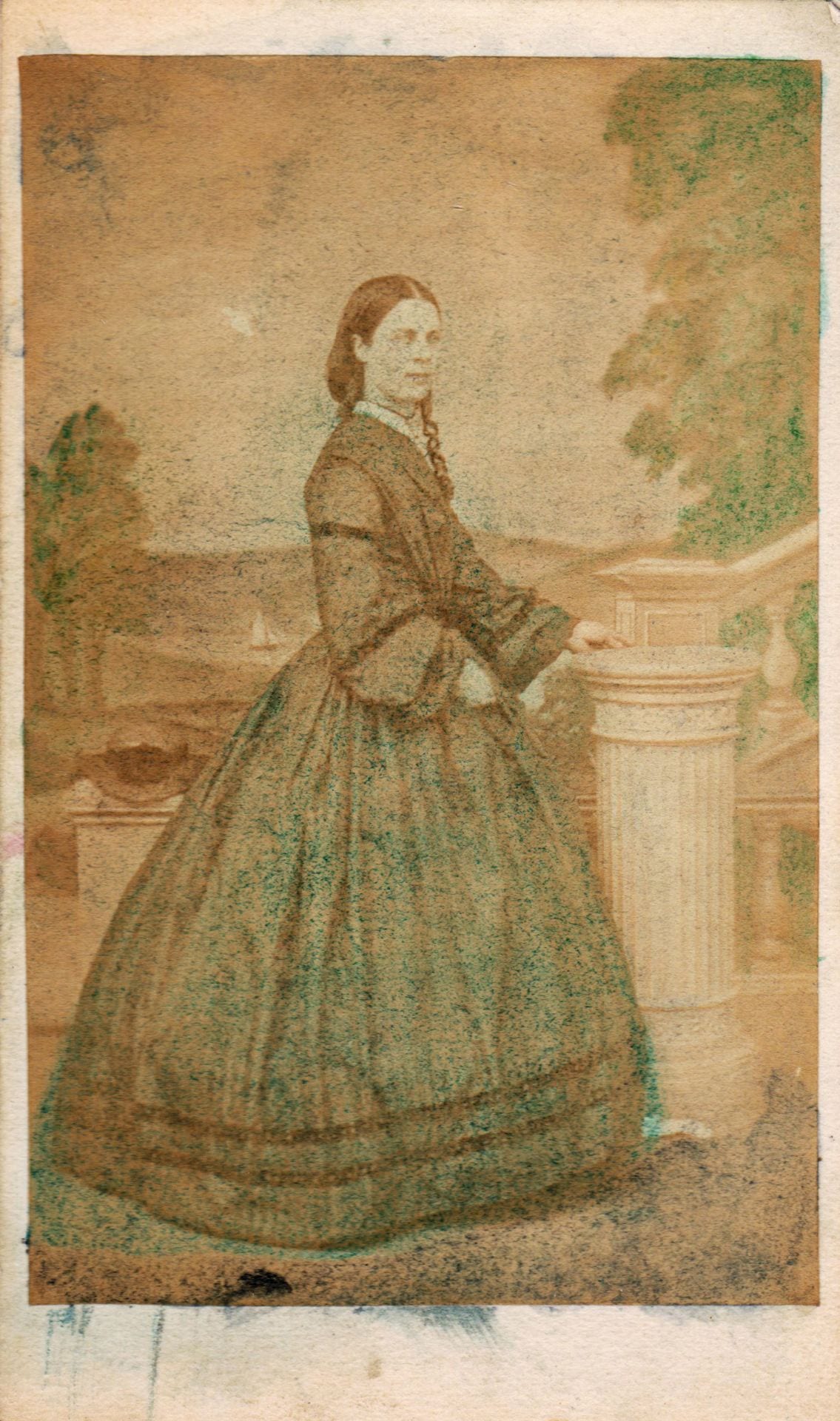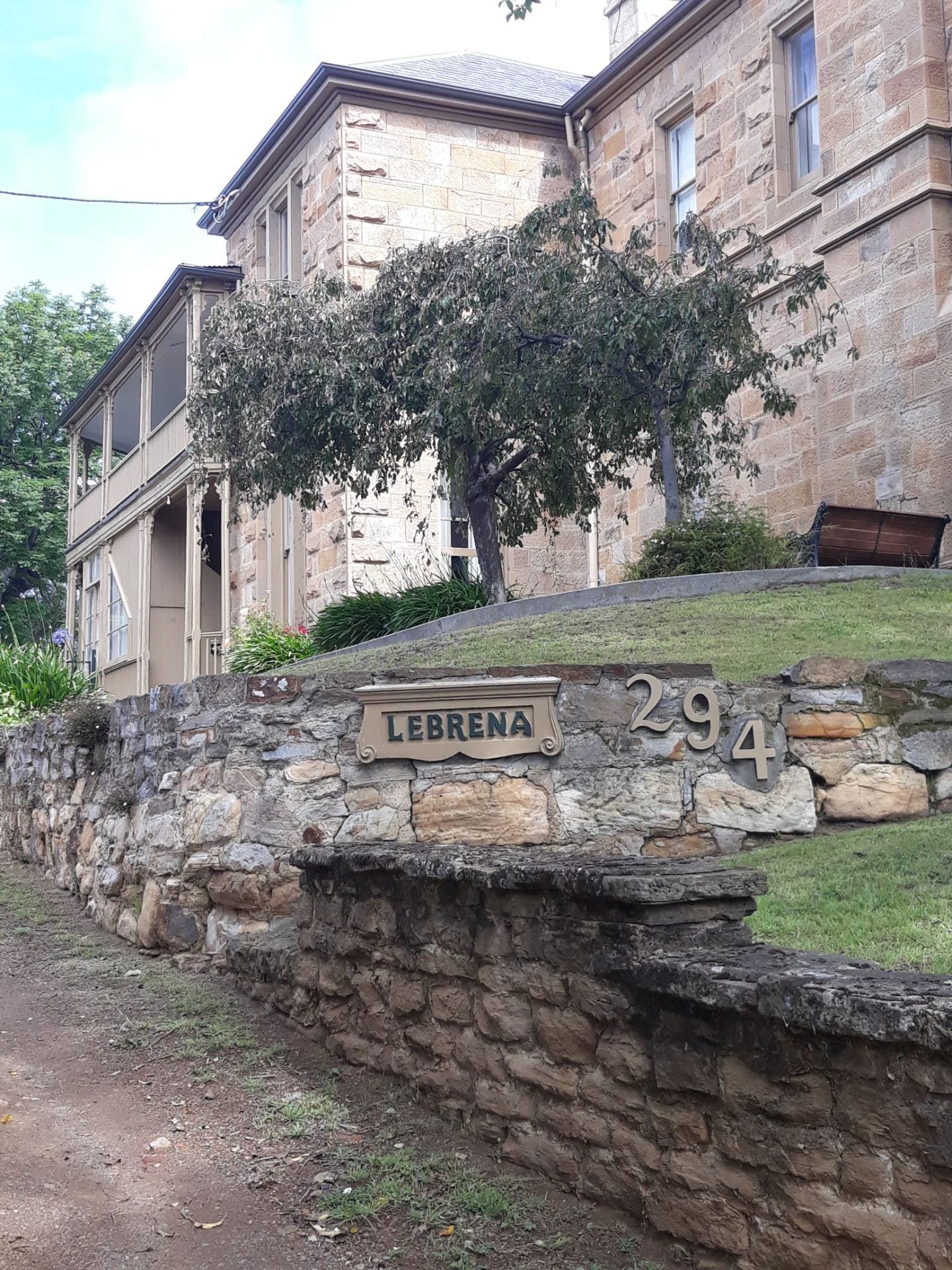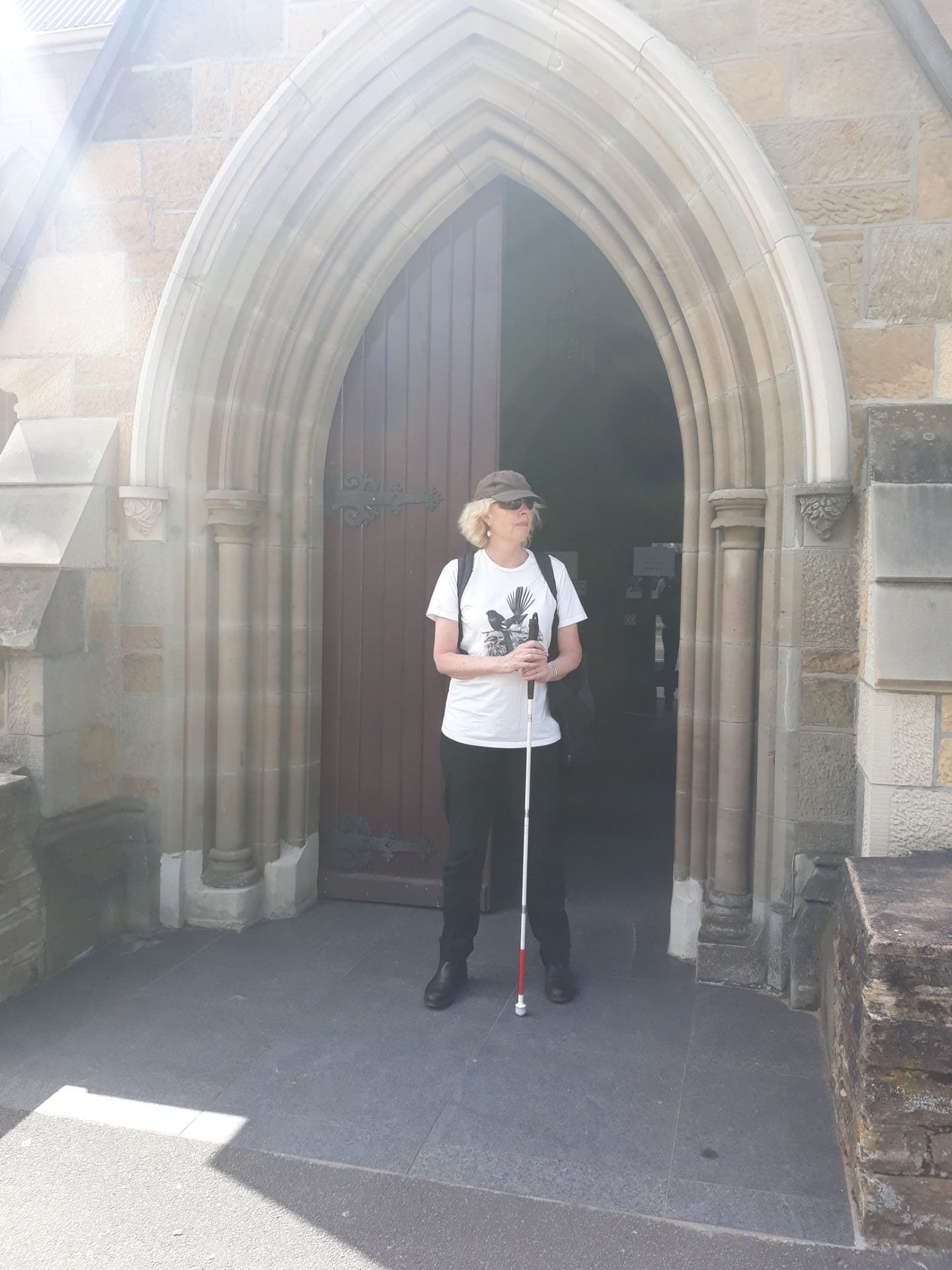It is late November 2018. We are in downtown Hobart looking for 140 Elizabeth St, where artist and photographer Alfred Bock had his studio in the 1860s. Just three pieces of physical evidence link Emily Harris with Hobart. One of them is a studio portrait taken by Bock sometime between Emily’s arrival in 1861 and her departure for New Zealand in 1865. She was working for the well-to-do Charles Champagne Des Voeux, who brought his partially paralysed wife Catherine and two small children to Hobart to find a geographically more stable home. Catherine had sustained injuries in the 1855 Wairarapa earthquake when the Des Voeux family were living in Whanganui, close to the epicentre of what is still the most severe earthquake recorded in New Zealand since colonisation. Emily was housekeeping and nursemaiding for the family, who moved between rented houses in downtown Macquarie St and a residence to the southwest in Holbrook Place.
The photo Bock took and probably hand-coloured was sent to Nelson and is now in a large format photo album with other early portraits of the Harris family. It is rather the worse for wear (watercolour overlay has turned Emily green) but it is the only image we have of her in her twenties and its arrival in Nelson must have been a momentous occasion for her mother, father and sisters.
We have decided to footstep Emily’s route from town to Holbrook Place to get a sense of the ground and the distance she would have covered, running errands for Mrs Des Voeux or picking up and paying for the portrait print on Elizabeth St, watching the ships in the harbour and the grey green light slanting across the hills. She is not yet a painter (though an obituary claims she studied drawing in Hobart) but she is most certainly a poet: ‘I have sent the verses you asked for,’ she tells her sister Frances in a letter of 1863. ‘Mr D.V. said they were very good so I was not likely to lose them.’
There is plenty of nineteenth-century Hobart on view as we begin our photo walk in the sticky afternoon heat. By the time we get to Davey St, lane traffic roaring past, we’re having second thoughts about this piece of ground-truthing. But as the shape of the land rises underfoot, Alison Alexander’s Beneath the Mountain: A History of South Hobart comes into its own and soon we are snapping landmark buildings. Roses tumble over stone walls, there are grand houses and workers’ cottages. Here is Lebrena, the mansion Henry Hunter built for solicitor and naturalist Morton Allport. We look for Aldridge Lodge, the home of Mary Morton Allport, Tasmania’s first professional woman artist and a leading light of Hobart’s intellectual life. Mary (the same age as Emily’s mother Sarah) gave painting lessons to her son Morton and the children of her friends. Did Charles and Catherine Des Voeux call on the Allports in Elboden St? Would Emily have been included in such a visit or left at home to mind the house and children?
Living Near the Allports in 1863 was the young Margaret Anderson Hope (1848-1934), Tasmania’s foremost painter of native flora from the 1870s. Like Emily, Margaret painted her flowers on screens and table tops, and there is a stunning screen in the Tasmanian Museum and Art Gallery that blends painting with the aesthetics of the Arts and Crafts movement. Margaret’s album of Tasmanian wildflowers sold at auction for $12,100. Her work was recently exhibited and published in Character of the Blossom: Wildflowers of Tasmania (2015).
But where is Holbrook Place and which house did Charles Des Voeux rent in this most fashionable of locations? We’ve spent some time poring over Tasmanian valuation rolls at the State Library, discovering that Holbrook Place was part of upper Davey Street and that there are no street numbers on that part of the rolls. This leaves us free to select our own Holbrook / Davey address for Emily, perhaps as hot as we are now and happy to reach home on Davey near its intersection with Darcy St.
We leave Emily disappearing behind her gate and cross Davey to start walking back to town under tree shade. We go to All Saints Anglican church on Macquarie St, where the Des Voeux family and Emily attended services regularly. The church, opened in 1861, is another Henry Hunter design. It is cool and quiet inside and there is time for reflection. We might not find out who gave Emily Harris drawing lessons in Hobart but it is a step forward to know that she lived in the neighbourhood of artists Allport and Hope. The two letters to her sister that are the remaining evidence of the years spent in Tasmania indicate that Emily was at times homesick and irritated by the household in which she found herself. ‘Easter will soon be here,’ she told Frances. ‘I wish I could go somewhere for a holiday. I would willingly give up all the expected amusements for a quiet [time] with a quiet cheerful family. The Opera Company is expected, the circus & goodness knows what besides.’
Lead writer: Michele Leggott
Research support: Makyla Curtis, Betty Davis



